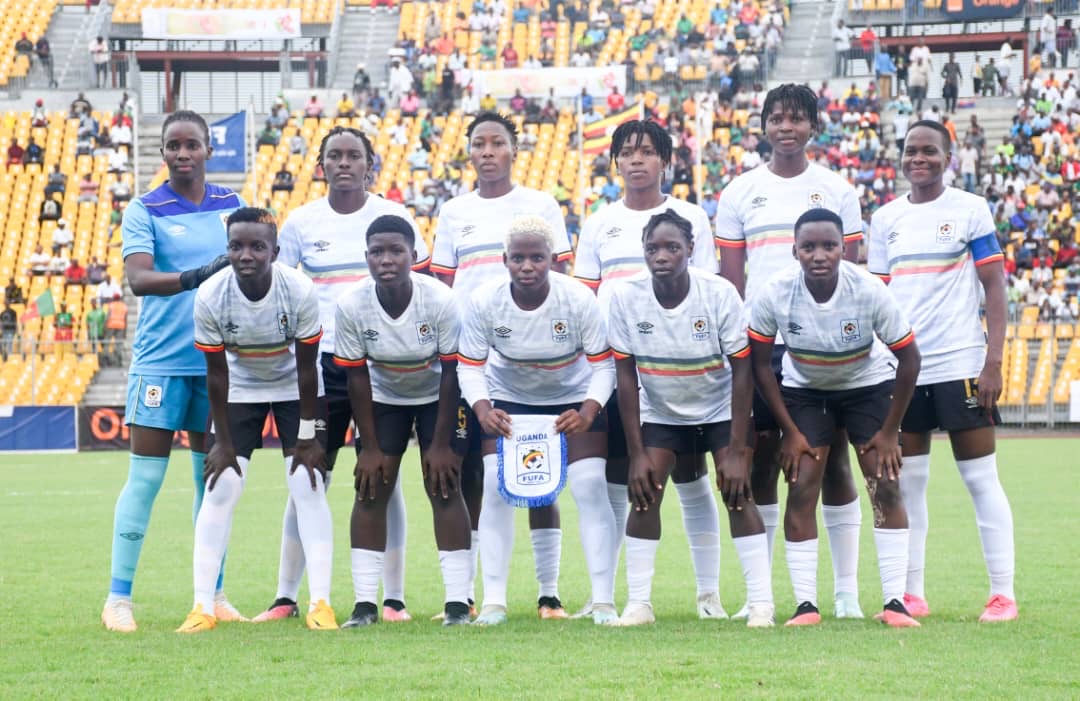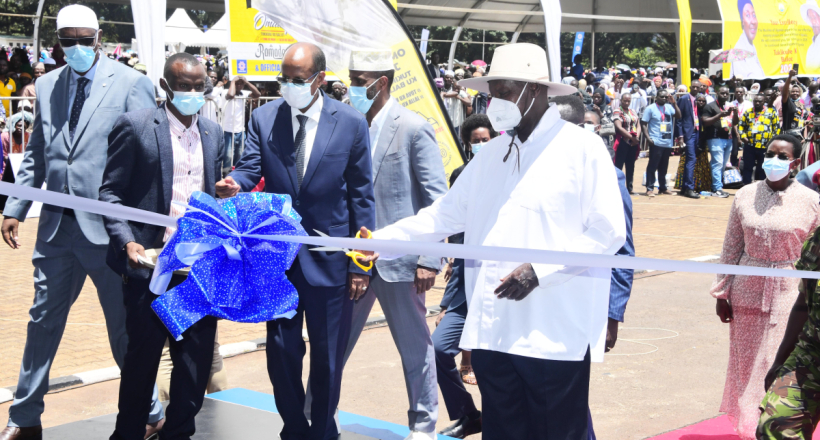Steven Ariong, Karamoja – As the majority of Ugandans celebrate the achievements of President Museveni since he ascended to power and launched a disarmament exercise in Karamoja, this celebration might not please all the leaders in the region. Some had been beneficiaries of the previous insecurity.
The previous insecurity characterized by cattle rustling in Karamoja had turned into a booming business. Some leaders had connections with rustlers, receiving shares of the stolen animals. If cattle rustlers raided 100 heads of cattle, 30 were given to particular leaders who planned the raids.
This business connection and the support rustlers received from some leaders escalated massive cattle rustling and rampant ambushes. The Karimojong even began crossing into neighboring districts such as Turkana, Teso, Acholi, and Lango to raid animals.
## Who Are the Karimojong?
The Karimojong are part of ethnic groups once called Nilo-Hamites, now referred to as the Nilotes of the plains. The total ethnic group includes the Samburu, Maasai, Turkana, Jie, Lothutho, Bari, Dodoth, Teusotho, Nyagatom, and Iteso.
The word “Karimojong” is a generic term that refers to a group of people identified by anthropologists as part of the Nilo-Hamitic ethno-linguistic repertoire living in northeastern Uganda. The cultural group comprises five ethnic communities occupying land covering about 12% of Uganda’s total surface area. Among these five communities are the Dodoth, who separated from the Karimojong proper in the mid-nineteenth century and moved into mountainous territory, providing better physical security and suitable dry-season cattle grazing.
Topographically, Karamoja is a relatively flat plain punctuated by hills and mountains, including Mount Moroto in the east, Akisim and Napak Mountains to the west, and Mount Kadam to the southern border.
The main ecological characteristic of this region is its inadequate and unreliable rainfall. It averages between 350mm and 1,500mm per annum, with some areas like Namalu in Nakapiripirit district reaching about 1,300mm. The rains are scattered, varying in amount from year to year and even from one place to another in the same year. The result of this rainfall pattern is a low resource base characterized by seasonal variations in productivity. This creates patchy conditions within the same zone, with luxuriant vegetation in one location and near emptiness in another. Most of the rivers flow westward, feeding the perennial swamps that form boundaries with neighboring districts such as Katakwi, Amuria, Kumi, Lira, and Kitgum.
## Location of the Karimojong
The Karimojong are located in the northeastern part of Uganda, a 27,200-square-kilometer area of semi-arid savannah bush and mountains. To the east, the escarpment drops into Turkana district in Kenya. To the north is South Sudan, and to the west and south are Ugandan districts populated by Langi, Teutho, and Sebei people.
From 1911 to 1971, Karamoja was a single district. In 1971, it was divided into two administrative districts: Northern Karamoja and Southern Karamoja, later renamed Kotido district and Moroto district. Northern Karamoja has since been divided into Kotido, Abim, Karenga, and Kaabong, while Southern Karamoja was divided into Moroto, Napak, Nakapiripirit, Nabilatuk, and Amudat.
Within Karamoja, the dominant groups are the Dodoth in the north, the Jie and the Lepthur in the central region, and the Bokora, Matheniko, and Pian in the southeast. Other similar ethnic groups, such as Tepeth, Kadama, Teutho (Ik), and Nyangea, live in the mountainous areas and around the edges of Karamoja.
## The Origin of Cattle Rustling in the Region
According to Mr. Peter Munyes, an elder aged 80 years and a resident of Nakapelimoru sub-county in Kotido district, the Karimojong began exercising aggressiveness in 1894. The region remained unadministered by the British for a long time because its semi-arid conditions were not attractive for producing cash crops like cotton and coffee to service industries in England.
Karamoja, however, offered significant opportunities for trade in ivory and slaves by Arab, Greek, but mainly Abyssinian (Ethiopian) and Swahili traders. As the number of elephants in the region decreased, the value of ivory increased, and traders increasingly offered firearms in exchange for ivory.
“I remember seeing foreigners bringing modern arms in exchange for ivory and slaves, which ignited weapons proliferation in the region,” Munyes said.
Munyes added that the arms made acquiring livestock easier for the Karimojong, who began raiding. Some traders were believed to be involved in these raids to appease the Karimojong. This increased the scale and intensity of the raids.
Mzee Munyes explains that although the protectorate government believed the human and economic cost of administering Karamoja was too high, a decision was made to conquer Karamoja. In military terms, the British could no longer ignore Karamoja, lest they lose it to traders.
Mark Losukari, an elder who worked as an intelligence assistant during the colonial era, recalled that in 1911, the protectorate government decided to close the district to all traders, allowing only one opening at Mbale in eastern Uganda, with occasional patrols in the area.
He said traders were blamed for the lawlessness in Karamoja. By 1912, a permanent Northern Barracks was established to undertake the pacification of Karamoja, achieved by shooting people, burning huts, and seizing livestock.
“At that time, the Karimojong acquired many guns through ivory trade. These guns, acquired from Arabs and Abyssinian traders, were supplemented by locally made guns,” he explained.
The Karimojong used guns not only for defense but also for raiding.
“The turning point in armament in Karamoja was in 1979 after the overthrow of the Idi Amin regime. The Karimojong broke into the 2nd Battalion barracks in Moroto after it was abandoned and took an unspecified number of arms and ammunition,” he said.
This development, according to Mzee Losukari, ushered in a new dimension in the politics of Karamoja. Massive armament in the region sparked a series of unprecedented cattle raids.
“As a result of this new military might, the Karimojong turned their guns not only at each other but also at neighbors. The demand for guns steadily increased, and the region provided a market for arms and ammunition from conflicts in Uganda, Southern Sudan, Somalia, and Ethiopia,” he noted.
John Lokiru, who survived seven ambushes in Karamoja, narrated that estimates put the number of guns in Karamoja between 30,000 and 60,000.
“Those guns made Karamoja a no-go area, making it difficult for people to access the region. Few people dared to go to the semi-arid region,” he said.
## Action Taken
Samuel Maruk, another elder, noted that the conflict forced President Museveni to pitch camp at Morulinga in Napak district, spearheading a political mobilization initiative involving government and local officials and leaders from Karamoja. They traversed the entire region, sensitizing the Karimojong about the essence of the exercise and persuading them to hand in their guns. However, not all local leaders supported the disarmament exercise because they were benefiting from the activity.
He said silent resistance by some leaders against the launch of the disarmament exercise in Karamoja delayed the exercise.
“The first phase of the disarmament exercise, comprising voluntary disarmament, was carried out between December 2001 and January 2002. However, it didn’t yield good results because the armed Karimojong refused to give up their guns and became more aggressive towards the army, supported by some leaders in the region,” he said.
Mr. Maruk added that when President Museveni noted that the Karimojong were resisting disarmament, he issued a circular to political leaders and the military in the region outlining guidelines for the second phase of the disarmament exercise.
According to Mr. Maruk, the circular outlined the government’s commitment to increasing the quantity and quality of police, intelligence, and local defense units (LDUs) to guarantee better protection for the people in the region. It also included establishing permanent barracks along the Kenya and South Sudan borders, constructing a security road along the border from Namalu in Nakapiripirit district moving northwards to cover the Kenya and Sudan borders, and recruiting and training vigilantes to guard against inter-clan raids.
“After this circular was received by all leaders in the region, government officials engaged kraal leaders, and radio programs were rolled out telling the public the dangers of possessing illegal weapons. However, a clique of leaders remained against the exercise,” he revealed.
On 15th February 2002, Mr. Maruk said he witnessed the launch of the second phase of disarmament, which was largely a military-led exercise with components such as shooting on sight anyone found with a gun, cordoning and searching suspected villages and kraals, arresting and prosecuting suspected criminals, curbing cattle raids, and strengthening livestock recovery.
He said military intelligence realized that some leaders were demobilizing the Karimojong not to hand over their guns. These leaders were arrested and beaten, yielding good results in disarmament. By the end of 2003, 10,000 guns were recovered from the Karimojong.
The army continued recovering guns, and to date, about 40,000 guns have been recovered since the exercise started.
After the exercise, the hears of the people of Karamoja rested from hearing gunshot and then any gunshot could make everybody panic yet those years, gunshot was listened to as music. Currently anybody.
The region is now very peaceful, there is free movement of people to and from Karamoja and rampant incidents of road ambushes and cattle rustling is no more although there may be one or two in a year.
Leisure places such as discotheques, betting, sports which were unknown in the region are now in the entire seven Karamoja district. People now party the whole night.
The Current peace in the region has made it easier for the region to get its first cement and clink factory which is under construction.
Previously, many so called investors have been ferrying raw minerals from Karamoja taking to process in other parts and called it different names without evening mentioning a word karamoja where they get minerals from.
This current factory is being set up by West International Holding Limited, a subsidiary of China West Cement limited (Stock Code 2233.HK) a Hong Kong listed company at the cost of shs Trillion.
The factory which President Museveni himself led the ground breaking mid this year is now under construction in Nadunget Moroto district and it has earned the man from Rwakitura a name.
Several people who visit Moroto for the first time driving in a tamack road, charge their phones using national grid in Moroto now have the ground to reject the slogan used by some people in the previous governments that (We can’t wait for Karamoja to develop).
This factory when its completed in 2025, will employed more than 2,000 people with the majority being the Karimojong. Also many natives will be sponsored for tertiary institutions.
This publication has learnt that many purported investors holding mining licenses are in panic mood because any time they will be blocked from transporting raw minerals outside Karamoja.
Mr Ambrose Byona the factory’s director said the factory will help to uplift the living standered of the Karimojong and also improve on the country’s economy.
Meanwhile a group of elders threatened to curse whoever has got an ill motive towards the construction of this factory.




















